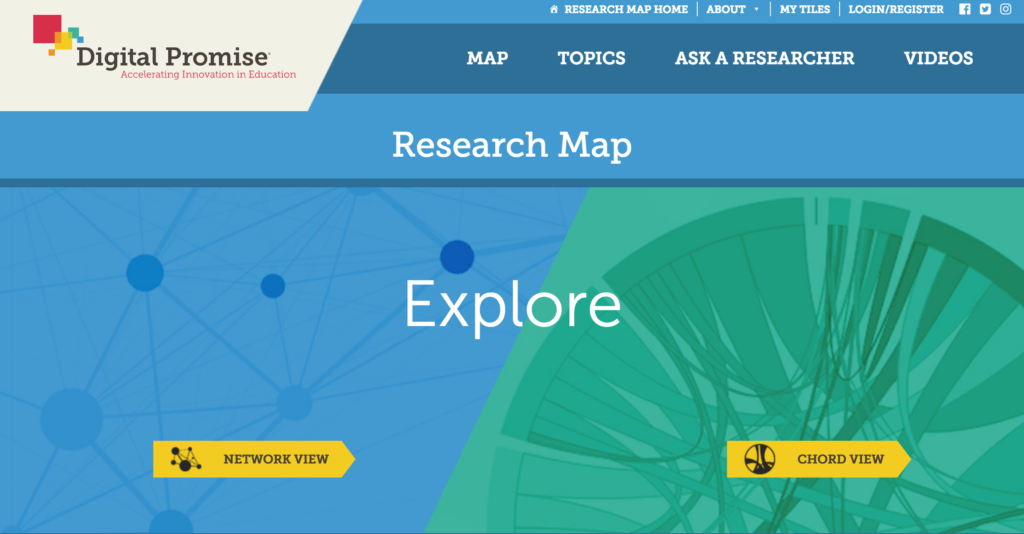There’s a lot of knowledge packed away in academic journals. But it can be difficult for education technology developers, teachers and administrators to find and comprehend that information.
An interactive “Research Map” website – with data visualizations, videos and links to relevant studies on an array of topics – hopes to bridge the divide. It draws from 100,000 articles published in 180 journals.
“We were trying to solve the problem of so much research being inaccessible,”
Karen Cator, president and CEO of Digital Promise
The Research Map website, launched last year, has recently added two updates. The first is an “ask a researcher” feature that allows teachers and administrators to pose questions to experts at Harvard University’s Usable Knowledge project. The second is a set of videos on 11 topics (one example: language learning) that give viewers the ability to watch key research concepts in action. These two features are meant to appeal to educators who may not have time to investigate academic papers.
The research available on the website goes back about 10 years. It includes references to notable earlier works, to insure that context isn’t lost. Some of the research can be viewed for free online, but, as is common with academic research, sometimes only a summary is available publicly without a subscription to the journal where the work is published. (Those who want to see research that’s behind a pay wall can try contacting the researcher directly; often they are happy to provide a copy.)
And, at this point, any guidance on research is a step up from the current state. In one notable example of how little research plays into development, a 2015 report from The Joan Ganz Cooney Center at Sesame Workshop found that of the 180 most popular literacy apps, more than 70 percent made no reference to any research or learning expertise concerning the product’s effectiveness.
One California superintendent told Digital Promise that the new website helped him quickly answer questions by providing fingertip access to relevant research. He could then send a link to relevant materials on the website (in this case, the topic was special education) to his team, which could help focus their conversation about research-based solutions.
Those connections between research and classroom practice are what Digital Promise says it hopes to inspire.
“We are deeply committed to improving the access, findability and use of research,” Cator said.
This story was produced by The Hechinger Report, a nonprofit, independent news organization focused on inequality and innovation in education. Sign up for their newsletter.

